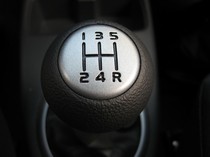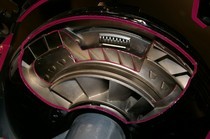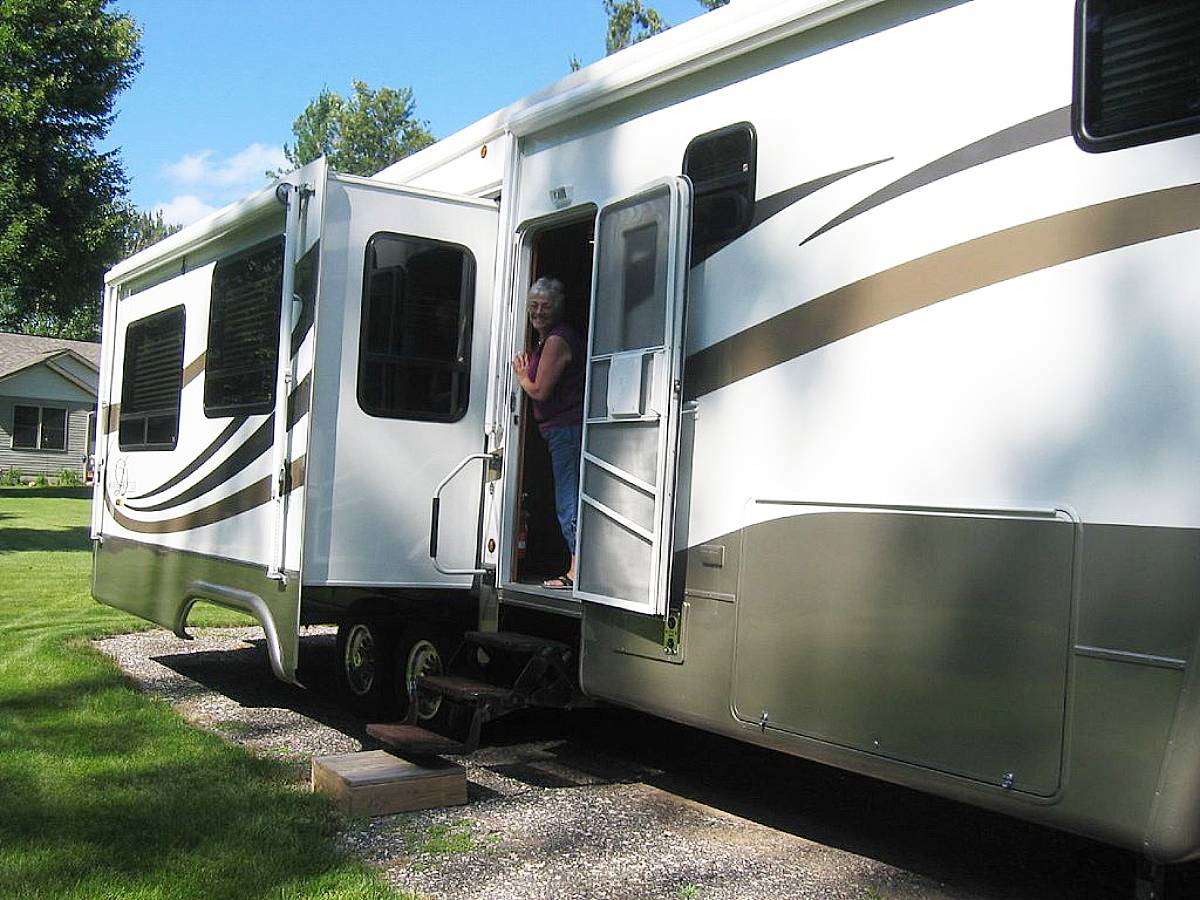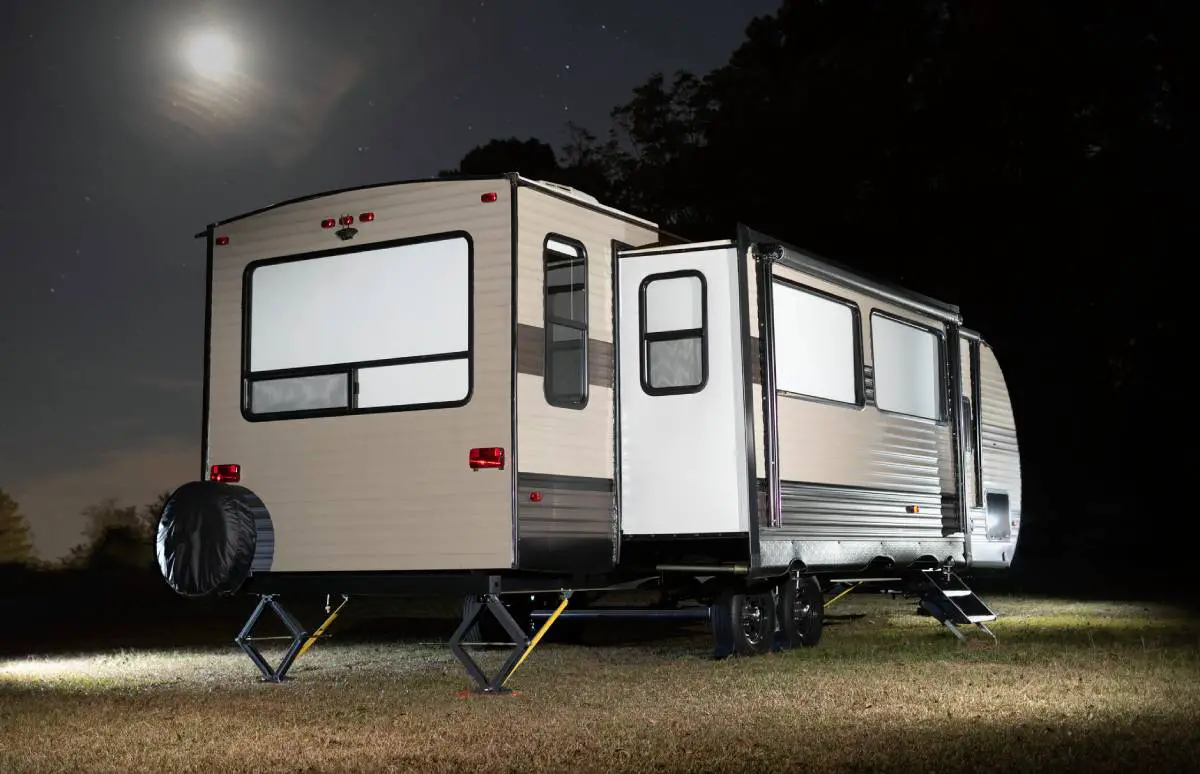 You’re cruising down the freeway with a mild headwind and your motorhome on cruise control
You’re cruising down the freeway with a mild headwind and your motorhome on cruise control
Unfortunately, the motorhome can’t make up its mind… in top gear it’s struggling in the wind, but when it drops a gear you’re screaming at high rev’s. One thing is certain: the gas gauge is dropping like a rock as it continually hunts up and down for a manageable gear.
Have you ever noticed, semi trucks have transmissions with 10, 13, even as many as 15 different speeds? The reason for that is to give the driver the ability to pick the gear that allows the truck to roll along within the most economical RPM range.
An engine that’s screaming along is pumping as much fuel through it as possible, while an engine that is trying to pull too much of a load in too high a gear is also washing excess gas through the engine. Both situations will consume excessive fuel, and cause excessive wear to the engine.
Gas motorhomes generally are equipped with 4-speed automatic transmissions behind a large cubic inch engine. The weight of the motorhome is carefully calculated by the manufacturer to give you the roomiest (and biggest) RV within the limitations of the drivetrain powering it. To keep manufacturing costs within reason, drive trains are limited pretty much to this type of offering. If you want more power, you’ll have to go with a diesel pusher at a considerably higher price.
So what can you do when your 38-foot Class A motorhome — which usually gets about 10 mpg — drops to 5-6 mpg because of hilly terrain, or high wind conditions?
RV Auxiliary Transmission
Have you considered an auxiliary transmission?
It’s a second gear box that is mounted behind your current transmission. Basically it’s a 2-speed transmission that in itself will double the number of gear ratios available to the driver.
The Gear Vendors Under/Overdrive will give you a gear between 3rd and 4th. So, when you need that in-between gear to keep your RPMs within the economical range, you’ll have it.
If your RV has a 3-speed transmission, then at highway speeds you’re running pretty high RPMs. With a Gear Vendors auxiliary unit, you will have that overdrive gear that will allow you to cruise during periods of reduced load at a more economical and lower RPM.
U.S. Gear is another brand name that supplies both under drive and over drive gear boxes for the recreational vehicle market. Their Dual Range Auxiliary Transmission can be ordered in either under or over drive — whichever suits your needs best.
High Heat And Gears
Heat will kill an automatic transmission in no time at all.
With limited numbers of gear ratios the clutch packs inside your transmission will slip, or be slow in locking up. This will rise the temperatures dramatically and quickly.
Many full time RVers tow a car behind their motorhome. Some take a boat along when heading out for the weekend. Others hitch on a trailer with ATVs for some offroad fun once they reach their destination.
Just know this: whatever you hitch onto the back of your motorhome will add drag and reduce your motorhome’s overall performance. Rather than over-stressing your engine (and possibly even overheating it), with an auxiliary transmission you’ll have the ability to drop half a gear in order to allow the engine to comfortably handle the extra load.
 Did you know that your transmission can actually overheat your engine? Transmissions are a major source of heat when they are being overloaded and slipping. The torque converter that couples the engine and transmission together is a fluid coupling. When it can’t reach lockup, it creates heat.
Did you know that your transmission can actually overheat your engine? Transmissions are a major source of heat when they are being overloaded and slipping. The torque converter that couples the engine and transmission together is a fluid coupling. When it can’t reach lockup, it creates heat.
The transmission cooler is part of your motorhome’s radiator. It actually uses engine coolant to reduce the temperature in your transmission. Otherwise, when the RV’s transmission overheats, the radiator will transfer the heat into the engine coolant causing the engine to overheat as well.
When you see steam coming out of the engine area while pulling a long hill or heavy load, you can be sure that you have not only overheated the engine, but you have also cooked the transmission, too.
All of this can be avoided by adding an auxiliary transmission behind your motorhome’s stock transmission. It’s an investment that will greatly extend the life of your RV while enabling you to handle long hills and windy conditions with ease.
I’ve been involved in RVing for over 50 years — including camping, building, repairing, and even selling RVs and motorhomes. I’ve owned, used, and repaired almost every class and style of RV ever made. I do all of my own repair work. My other interests include cooking, living with an aging dog, and dealing with diabetic issues. If you can combine a grease monkey with a computer geek, throw in a touch of information nut and organization freak, combined with a little bit of storyteller… you’ve got a good idea of who I am. To date, I’ve shared my RV knowledge in over 300 articles here at The Fun Times Guide! Many of them have over 25K shares.




